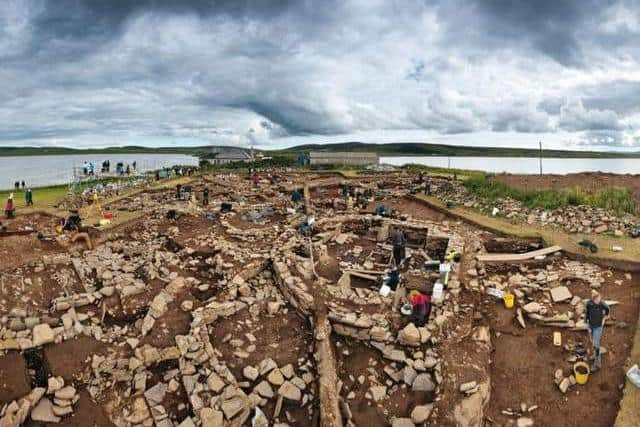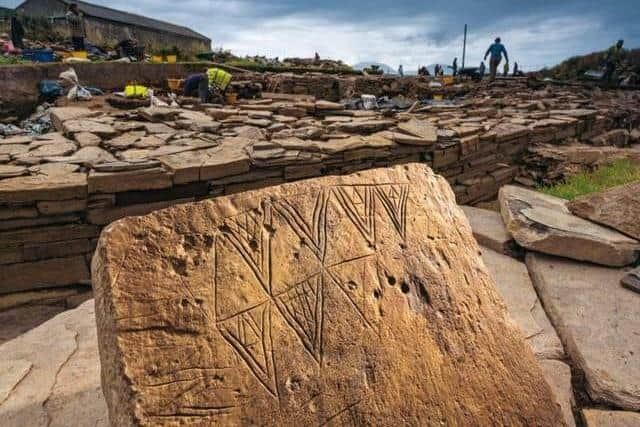Many of Scotland's ancient sites will be open to the public this summer
While excavation and examination of any finds continued through much of the Covid pandemic lockdown, albeit on a very small scale, the public were prevented from involvement at many sites.
In Orkney, the entire 5,000-year-old Neolithic Ness of Brodgar settlement will be open with a full-sized dig team on-site for the first time since 2019.
Advertisement
Hide AdAdvertisement
Hide AdAnd volunteers are now being sought for a survey of the ruins of what is described as an industrial ghost town in rural Galloway.


Woodhead Lead Mine village, near Carsphairn, was built in the 1830s and had a school and library until digging for ore and smelting ended in the 1870s.
The Society of Antiquaries of Scotland's Dig It! project will be gathering details on the site and other archaeological finds made at locations across the country.
The entire Ness of Brodgar site, which is being studied by a team from the University of the Highlands and Islands Archaeology Institute, is due to reopen shortly.
Meanwhile, archaeologists have made a ground-breaking discovery in Stornoway, uncovering thousands of years of Neolithic artefacts in the ‘capital’ of the Western Isles.


A team of historians have been excavating ground close to Lews Castle for the last two weeks to uncover what lies beneath.
The dig, led by local archaeologist Ian McHardy and the Stornoway Trust, forms part of a multi-million pound regeneration project on the grounds.
It’s understood the findings uncover origins of inhabitation of the land more than 3,000 years earlier than previously thought and include a range of Neolithic artefacts amidst centuries old foundations near the castle.
Advertisement
Hide AdAdvertisement
Hide AdIain Maciver, estate factor with the Stornoway Trust, said the discoveries have “excited” experts.
He said: “The headland across from the old Stornoway Castle, as you enter into the inner harbour, was identified as maybe a place of interest.
“A fortnight ago they started the dig. They expected to find, possibly, buildings or evidence of use.
“They started finding very interesting artefacts such as slate and flint, and as they went further down they started finding foundations.
“Among the foundations they found arrowheads, evidence of not just iron but Neolithic age material.”
Mr Maciver added: “What they found was not what they expected but the feedback was they were very excited by what they did find and would like to possibly dig further and uncover the secrets behind Sober Island.”
The project is one of a number of archaeological digs taking place since the end of the Covid-19 lockdown with several others being worked on by only a handful of experts throughout it.
Elsewhere in Orkney, work will recommence at Skaill Farmstead on Rousay where a large Norse hall, probably dating to the 10th to 12th centuries, was discovered beneath more recent structures in 2019 but any work was halted as coronavirus swept the globe.
The public will have the opportunity to witness the work first hand as fieldworkers offer tours and and open days of the sites.
Comments
Want to join the conversation? Please or to comment on this article.